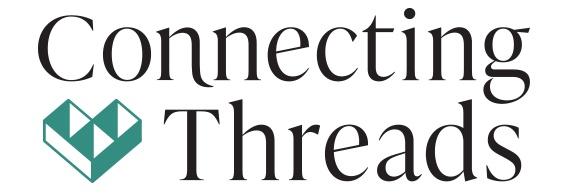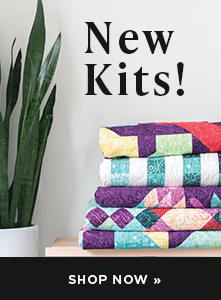Hand Sewing Needles 101
by Judy Reed
Choosing the right needle for the job can be overwhelming when there are so many kinds and sizes. Ideally, what you want is a needle that feels comfortable, glides through the fabric, has an eye that you can thread, doesn’t bend and is the right size for the fabric you are sewing.
When you choose your hand sewing needle size, the larger the number on the package, the finer/smaller the needle will be. This is the opposite of the needles you purchase for your sewing machine. If you are using finer/thinner fabric you would select a finer/smaller needle.
Needles are normally made of high carbon steel and then coated with nickel, gold, Teflon, or platinum. The coatings are put on to prevent the needle from corroding and to make the needle glide through the fabric.
I have listed the common needles that are used by quilters and what their intended uses are. Some of the needles go by more than one name but are the same type of needle. Use this as a general guide, but feel free to decide what you like for yourself!
Sharp/Appliqué
A general-purpose round eye needle for sewing, appliqué, and mending. This is a needle with many uses. It is great for appliqué because it is thin enough to glide through the fabric smoothly, has a sharp point and doesn’t bend as easily as a milliner.
Between/Quilting
This is the needle of choice for hand quilting because it is short and easy to control. It is thicker than other needles which makes it stronger for penetrating multiple layers. The shorter the needle the smaller the stitches. Start with a 9 or 10 and with experience you can move to a smaller needle. This is a tiny needle with a small round eye. They are also available with a large eye for easier threading.
Milliners/Straw
These are similar to Sharps but are a longer needle. They were developed for hat-making, and are now used for basting and gathering. I know of people who love them for binding and appliqué too.
Embroidery/Crewel
This type of needle is the same length as Sharps, but with a longer eye for easier threading with multiple threads and floss.
Shop hand sewing needles at Connecting Threads >
Machine Sewing Needles 101
by Judy Reed
There are many different types of sewing machine needles, and a lot of variables to consider when choosing the right one. Your sewing machine, your thread type and size, and the fiber content and thickness of the fabric you are using all factor into deciding what needle you should use. You should also change your needle often. Many recommend changing your needle every time you start a new project.
Titanium-coated needles have been available for industrial and long arm machines for years and are now available for home sewing machines. They have a very thin layer of titanium nitride that keeps them sharper longer. They last longer than other needles so you don’t have to change them as often.
Fabric/Thread/Needle Combination
There isn’t a specific needle type for every combination but, there are many specialty needles for specific types of threads and fabrics. A general rule is the finer the fabric you are sewing with, the finer the needle should be. If the needle eye is too small for the thread you are using the thread will shred; if it is too big the needle may leave holes in the fabric because the thread isn’t thick enough to fill them. When selecting a needle for your sewing machine another general rule is to use a ball point for knits and a sharp point for woven fabrics. A Universal needle will work for both.
Needle Size
There are two size numbers on the package. The smaller number is American (universal) sizing and the larger number is European (metric). It doesn’t matter what order you see the numbers in, they mean the same thing. The larger the number on the package size, the thicker/larger the needle. This is the opposite of the needles you purchase for hand sewing. A size 60/8 is very fine and 120/19 is heavy duty. For general piecing on quilting fabric I like to use a 70/12 or 80/14 and adjust my size depending on the project.
Universal
Slightly rounded point. General-purpose needle suitable for a wide range of fabrics. It can be used on woven fabrics as well as knits. If you are only going to use one type of needle for quilt projects, make it a Universal.
Embroidery
Has a larger eye so thicker threads can go through the eye. Slightly rounded point. Specially designed shaft and
longer eye for embroidery and decorative stitching and embellishing using specialty threads.
Quilting
Tapered shape designed to stitch through multiple layers and crossed seams. The shape of this needle makes it ideal for quilting.
Topstitch
Extra sharp for heavier fabrics and quilting. It has a longer eye so you can use heavier threads without leaving holes in the fabric.



 Tutorials
Tutorials

